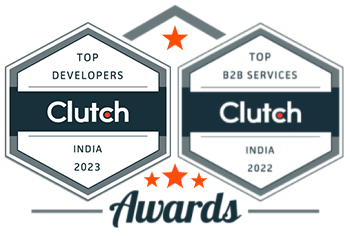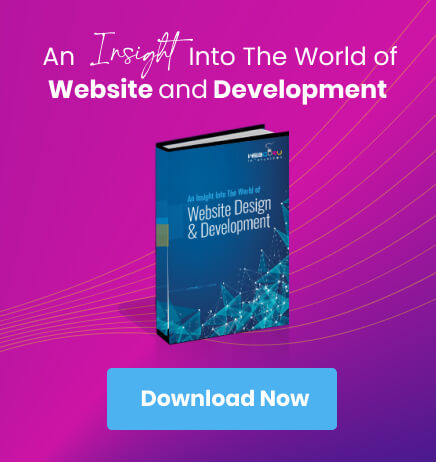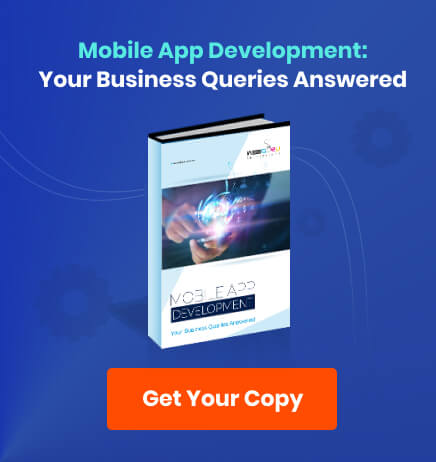Home Blog Mobile App Development 8 New Flutter Features That Users Will Love
8 New Flutter Features That Users Will Love
- 16 Oct / 2025
- 100 views
- 9 Min Read

Flutter has grown into one of the most reliable frameworks for cross-platform apps. But the 2025 updates make it even stronger. This blog sheds more light on said features. With the new Impeller engine, apps feel faster and smoother across devices. Material Design 3 adds personalisation through dynamic colour themes, while improved desktop and web support extends reach beyond mobile. Built-in accessibility tools, advanced state management, and native interoperability give businesses more flexibility. Add AI/ML support and powerful DevTools, and Flutter becomes a complete toolkit. For any professional mobile app development services, these features bring both efficiency and an edge in today’s competitive market. Continue reading to learn more.
According to Statista, there are approximately 6.3 billion smartphone users worldwide. It is therefore not surprising that another study by them showed that mobile apps generated $935 in revenue in 2024.
For businesses that want to have mobile apps of their own, mobile app development services are a must. However, it is also important to remember that performance is no longer optional.
Flutter started as a Google experiment. It quickly grew into the preferred cross-platform toolkit for businesses that need fast, native-feeling apps. App development companies and developers liked the single codebase. Businesses liked the cost savings. Designers liked the consistent UI.
Flutter 3.x and subsequent releases introduced a set of features that change what’s possible. These updates sharpen performance. They expand platform reach and add better tooling for quality and accessibility.
This post breaks down eight Flutter features that matter in 2025. Each one helps teams build apps that users keep and recommend. If you’re planning an app this year, understanding these features is essential. They’ll affect architecture, timelines, and ROI.
Why Flutter Continues to Dominate Cross-Platform Development
Flutter’s rise isn’t accidental. It blends a single codebase with near-native performance and predictable UI. Big brands and startups now ship Flutter apps to multiple platforms with consistent interaction and appearance. Companies pick Flutter for three clear reasons-
- One codebase
- Fast rendering
- Low maintenance cost
This trio shortens delivery windows and simplifies QA. In 2025, user expectations for app performance and polish are higher than ever. Slow frames or inconsistent visuals cost installs and trust.
Flutter’s architecture — a rendering engine plus a rich widget system — gives teams direct control over every pixel. This control makes it easier to tune performance across iOS, Android, web, and desktop.
8 Flutter Features Revolutionising User Experience in 2025
Keeping pace with Flutter’s capabilities matters. New engine work, design tokens, and state primitives mean different tradeoffs. Teams that update their toolchain and skills get better UX with less rework.
With that in mind, here are the eight features shaping user experience in 2025. These features reduce jank, increase personalisation, widen reach, improve accessibility, and speed development. Use them together for the best results.
1. Impeller Rendering Engine
Impeller is Flutter’s modern rendering runtime. Technically, Impeller reduces shader-compilation jank and streamlines GPU pipelines. The result? Far fewer runtime shader compilations and much steadier frame rates. This means smoother animations and consistent 60–120 FPS on capable devices.
For businesses, smoother visuals and graphics cut user frustration. Lower jank means fewer negative reviews and reduced churn. Apps that rely on animations like retail galleries, AR previews, interactive product viewers, or mobile games benefit most.
For example, consider a retail app with high-resolution product images and animated transitions. Impeller keeps the UI fluid while users swipe, zoom, and inspect products. The business sees better engagement and higher conversion.
2. Material Design 3 with Dynamic Colour Theming
Material Design 3, also known as M3, brings dynamic colour to Flutter. Apps can extract a palette from the user’s wallpaper or a content image and adapt the UI tone. This dynamic colour system helps apps feel current without breaking brand identity. The result is a more personal, coherent experience.
Developers can map brand tokens to M3 roles so key elements remain recognisably on-brand while supporting user personalisation. Business payoff is straightforward, too. There is higher perceived polish, better accessibility under user theme choices, and happier users who feel the app “fits” their device.
This feature makes Flutter ideal for consumer apps, corporate portals with user dashboards, and any interface where familiarity and personality boost retention.
3. Enhanced Web and Desktop Support with Production-Ready Stability
Flutter has matured beyond mobile. Its web and desktop tooling support responsive layouts, improved rendering on wide screens, and a better state for multi-window apps. The single codebase advantage remains powerful. One engineering investment can deliver builds for iOS, Android, Windows, macOS, Linux, and the web. This reduces cost and speeds market reach.
Rendering and responsive design improvements mean Flutter web apps behave more like traditional web apps. For businesses, this translates into big savings. A single project can target multiple channels with a consistent UX. It suits SaaS dashboards, admin panels, and enterprise apps.
4. Built-in Accessibility Features and Semantic Annotations
Flutter provides an expanded accessibility widget set and clear semantic APIs. The Semantics widget and semantic roles help screen readers, keyboard navigation, and other assistive tech interpret UIs.
What changed is maturity. Semantic defaults improved. Developers don’t have to manually add semantic information (like labels, roles, or descriptions) to make widgets understandable. With recent updates, many widgets now automatically include these properties. Tooling also helps surface accessibility issues beforehand. Many widgets now produce a usable accessibility tree by default.
Business value is big. Accessible apps reach more customers and meet regulatory requirements in many markets. This matters for healthcare, finance, and public sector apps. There’s also a market reason: over a billion people worldwide have visual, hearing, cognitive, or other disabilities. Accessibility isn’t charity — it’s business sense.
5. Advanced State Management with Signals and Fine-Grained Reactivity
State management has evolved. Signals and similar fine-grained reactivity approaches let apps rebuild only those that require changes. Signals track dependencies automatically. When a value changes, only dependent nodes update. This reduces CPU work and battery drain.
With reduced CPU work, the result is better runtime efficiency and a snappier UX. Developers also get clearer code and lower technical debt. This pattern fits data-heavy apps, real-time tools, and complex interfaces where tons of state flow through the UI. It speeds feature delivery and makes long-term maintenance cheaper.
6. Native Interoperability with FFI and Platform Channels
Flutter supports direct native integration through Dart FFI. Platform channels remain a robust option for safe, type-checked messaging. FFI gives low-latency access to native C/C++/Rust libraries. Platform channels enable structured native bridges. This means teams can reuse legacy native code or call optimised libraries for image processing, crypto, or specialised hardware drivers.
Improved interop shortens the path to device features and hardware acceleration. Use cases include biometric banking flows, medical sensors, industrial IoT integrations, and any scenario that relies on specialised native libraries.
7. AI/ML Integration with TensorFlow Lite and ML Kit
On-device AI is practical and mainstream. Flutter has first-class support for TensorFlow Lite through plugins and for Google’s ML Kit for common vision and language tasks. This enables features like OCR, face detection, and on-device recommendations without a server round-trip.
The advantage is twofold: real-time processing and improved privacy. Models run locally, lowering latency and reducing cloud costs. Applications include smart cameras, intelligent search, document scanning, and personalised feeds.
8. Performance Monitoring and Analytics with DevTools Enhancement
Flutter DevTools and the surrounding monitoring ecosystem give teams real-time performance insight. Memory views, CPU profiling, frame analysis, and network inspection reveal bottlenecks before they become user problems.
Integrations with crash analytics and session replay tools help prioritise fixes. The practical result is fewer regressions, faster incident response, and better retention. For apps with large audiences, small improvements in frame times and memory can translate into meaningful business gains.
Future-Proofing Your Business with the Right Development Partner
These eight features show how cross-platform development has changed. They set a higher floor for what users expect. But features alone don’t guarantee success. Execution matters. Architecture, QA, observability, and post-launch support determine whether a new feature helps or hurts.
Choose a mobile app development company with deep Flutter experience. Look for companies that pair design sense with performance engineering and production monitoring. Webguru Infosystems, for example, brings 19+ years of digital product experience and a proven portfolio across industries.
Our team builds cross-platform apps, tunes performance, and provides post-launch support. Working with an experienced team reduces risk. It shortens delivery timelines and lowers maintenance costs. This is crucial when the market moves fast.
Webguru’s mobile app development services are made to fit your business goals. We combine cross-platform expertise, performance tuning, and post-launch support to help you win users. Whether you’re building a new product or modernising an existing app, act now. Schedule a consultation to discuss architecture, timeline, and a practical roadmap.

Srishti Bhattacharyya
A writer driven by a love for words, who is constantly exploring new ways to push the boundaries of expression. Always testing the limits of creativity, she finds inspiration in books, painting, and the endless ideas waiting on Pinterest.

-
1000+
Happy
Clients -
25+
Countries
Served -
19+
Years of
Trust







